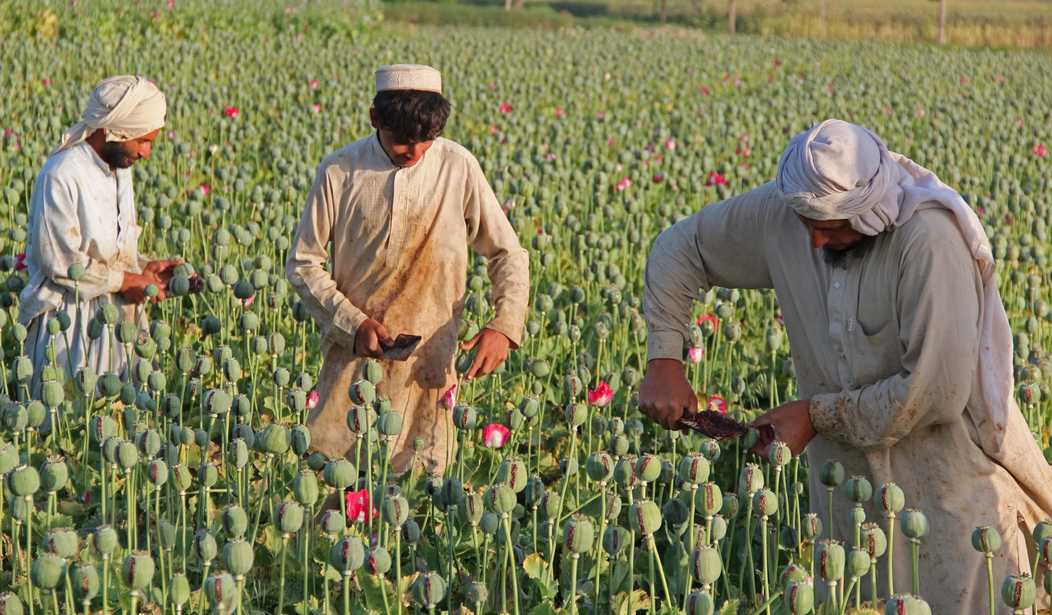Despite the U.S. spending $8.4 billion on counternarcotics efforts in Afghanistan since 2002, and UN projections that pained a rosier picture, Afghan officials reported today that drug production and trafficking were on the rise in 2015.
The country’s Criminal Justice Task Force reported nearly 600 suspects arrested during 2015 in 473 drug trafficking and production cases, with the majority of criminal activity in Logar, Nangarhar, Kandahar, Nimroz, Kabul, Helmand and Badakhshan provinces.
Officials warned that the spiraling drug trade, fueled by Afghanistan’s opium poppies, “poses a similar threat as terrorism.”
“Nearly 4.5 tons of heroin, 16 kilograms of morphine, 24.5 tons of opium, over 158 tons of hashish, 13,107 liters of alcoholic beverages, 136 light and heavy weapons and 275 vehicles were confiscated in nine months of this year,” said Ahmad Khalid Moahid, a spokesman for CJTF, according to Tolo News.
In the October quarterly report to Congress, the Special Inspector General for Afghanistan Reconstruction (SIGAR) noted that the United Nations Office on Drugs and Crime reported a 48 percent drop in opium production from 2014 to 2015.
“The drop would be significant, but UNODC cautions that its reporting methodology changed between 2014 and 2015, possibly ‘making the extent of changes appear greater than it actually was,'” states the SIGAR report. “The 2014 opium production was estimated at 6,400 tons (14.1 million pounds); 2015 results are estimated at 3,300 tons (7.3 million pounds). Cultivation levels also decreased from 224,000 hectares in 2014 to 183,000 hectares in 2015, but the number of poppy-free provinces declined in 2015, with Balkh losing its status.”
“Despite the reduced opium production levels, cultivation remains significant and eradication levels have little impact on curtailing production or cultivation.”
In October, President Ashraf Ghani signed a five-year National Drug Action Plan to decrease opium-poppy cultivation 10 percent by 2016 and 40 percent by 2019, decrease the production and trafficking of opiate, reduce domestic drug demand, and increase treatment for users.
SIGAR said despite the billions the U.S. has pumped into the eradication effort, “the U.S. track record in combating narcotics production in Afghanistan is not encouraging.”
“U.S. spending on counternarcotics since 2002 already exceeds $8 billion, yet Afghanistan remains the world’s leading producer of opium,” the report adds. “Limiting opium cultivation and curtailing drug use are becoming even more formidable challenges with a rising number of heroin users in China increasing the demand for Afghan opium.”
The State Department told SIGAR months ago that they were crafting a new counternarcotics strategy for Afghanistan, but now the administration has decided to just work within Ghani’s plan.
“With the reduced Coalition footprint and the tenuous security situation in certain provinces, limited resources are available to execute programs and oversee their implementation,” SIGAR noted, adding that State Department staff weren’t even able to visit the Ministry of Counter-Narcotics offices in the previous quarter.
Officials have warned for years of the close alliances of terrorist groups and the narcotics trade in Afghanistan.
The Pentagon told SIGAR last year that “poppy production is on the increase and is a significant threat to U.S. and international efforts in Afghanistan.”










Join the conversation as a VIP Member